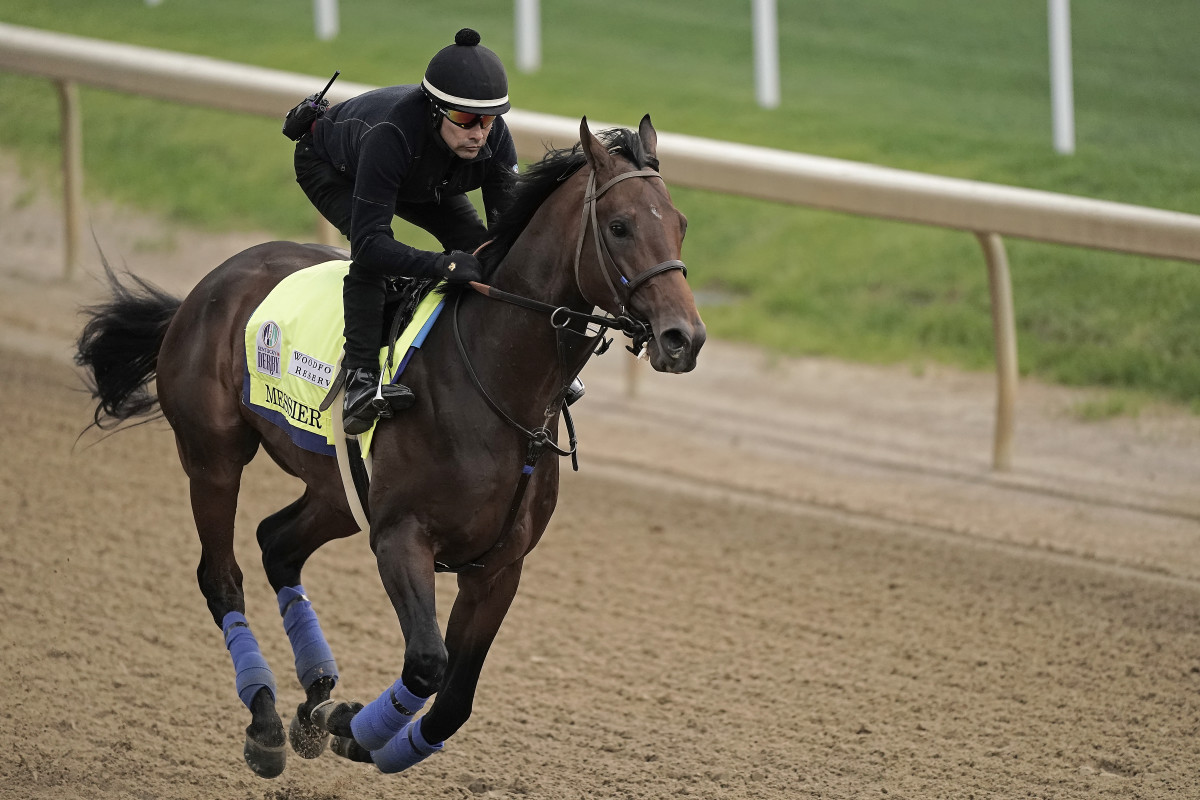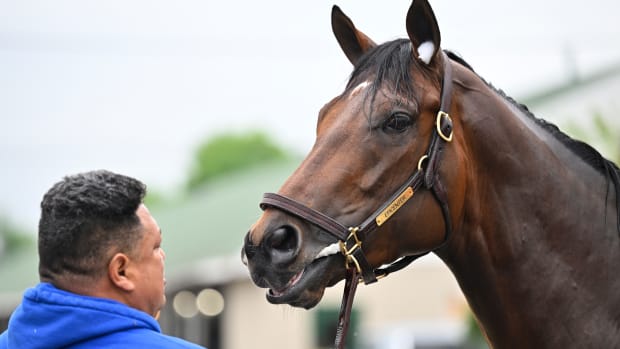If You Gamble on Sports, You Must Place a Wager on the Kentucky Derby


LOUISVILLE, Ky.—In a world devoid of dreams and derring-do, the gamblers among us would shun betting on the Kentucky Derby. It’s too hard. The handicapping challenge is enormous, the variables are numerous, and a large dollop of luck is often required to win.
Betting on four-legged animals is a risky enough endeavor. As a friend always says, the surest way to double your money at the track is to fold it in half and put it back in your wallet. But then you add in the factors that make the Derby unique, and the difficulty increases: this is the largest field the horses will ever face, usually at or very near the maximum 20; this is the farthest any of them have ever run, 1 1/4 miles; this is the biggest crowd they will ever experience; and at age 3, they’re very young animals.
So, sit it out, right?
Hell no.
It’s the Kentucky Derby. If you gamble on sports, you must place a wager on this. Whether it’s $2 or a vastly larger sum, no self-respecting American bettor can watch the granddaddy of gambling events without a stake in the race. Do your civic duty.
They’ve run this race every year since 1875, making it the oldest continuous sporting event in the United States. And yes, there was betting at the first Run for the Roses, won by Aristides—auction pools were popular, and smaller individual wagers were placed as well. If people could bet on the Kentucky Derby when Ulysses S. Grant was president, we damn well better do it now with Joe Biden in office.
Now, how you bet and on which horse—that’s another matter. It’s entirely up to personal choice, of course, but this is my tentative plan for how to attack it.
(Disclaimer: If you’re foolish enough to follow my betting strategy and lose, that’s on you. I am extremely not responsible. If we both win, I will accept plaudits and commissions. Plaudit, by the way, won the 1898 Derby.)
I’ll throw $100 at the greatest American race, divided thusly:
- A $20 win ticket, because it’s a point of pride in Louisville to walk around town saying, “I had the winner.”
- A $5 exacta box of three horses, which means if two of those three finish 1-2 in any order, that’s a winning ticket. That’s a $30 wager.
- A $2 trifecta part wheel, which is for the top three finishers and is a variation that involves more horses. The plan is two horses on the top line (first place), four on the second line and four on the third line. Cost: $24.
- A $1 superfecta box of four horses, which is an attempt to hit what is almost always a big Derby payout. That’s picking the top four finishers, in any order, and that’s also a $24 bet.
- For the last $2, put it on the longest shot on the board to win. What the hell.
Now, the horses that will earn my backing (and my unending spite when they inevitably finish up the track): Epicenter, Zandon, Messier and Crown Pride. Pretty chalky, with one exception. But the point is to cash tickets, not to get cute and win nothing, and the favorites seem deserving.
Epicenter (7-2 morning line odds) and Zandon (the favorite at 3-1) loom large over the rest of the field. They scored impressive victories in their last prep races: Epicenter dominated the Louisiana Derby, while Zandon overcame major traffic problems and a soft pace to come from the back of the pack and win the Blue Grass Stakes. They are conditioned by excellent trainers who have never won the Derby and due for their Kirby Smart breakthrough moment: Steve Asmussen has Epicenter; Chad Brown, Zandon. They have trained well since arriving at Churchill Downs, with Zandon in particular drawing raves for his morning work.
The post position draw likely did not put either in jeopardy, although Epicenter will have to get away from Gate 3 alertly to avoid being buried inside. (Zandon drew the 10 hole, right in the middle of the starting gate.) And if the Churchill racing surface gets gooey—which is possible, with a lot of rain in the forecast this weekend—both already have scored a win in their careers on a wet track.

Messier (the 8-1 third choice) is the former Bob Baffert trainee now in the hands of the previously anonymous Tim Yakteen, who inherited the 3-year-old stars from the Baffert barn when his legal appeals of a Churchill ban ran out in March. Named for the former hockey star—Mark Messier, the five-time Stanley Cup champ—Messier the horse was the Santa Anita Derby favorite before being passed in the stretch by stablemate Taiba.
While that race punched the Derby ticket for Taiba (12-1), he’s so lightly raced and conditioned that I’m going to toss him from my wagering plan. Taking on a 20-horse brawl after just two career starts is asking too much. Messier is more seasoned, and needed the Santa Anita Derby more as a tightener after two months between starts. The horse’s ownership group, led by Tom Ryan and SF Racing, had Messier pointed to a big effort in Louisville for months.
Crown Pride (20-1) is the longer shot I’m working into the mix. He’s an intriguing wild card—a Japanese horse who won the UAE Derby in March, then came to Churchill for what has been quite the staycation. Crown Pride might be the most visible Derby horse in history. Most horses spend no more than five minutes at the track in the morning, and often less. They get in their gallop, or breeze, or jog, and they leave. Crown Pride has spent up to 40 minutes on the track, jogging in circles in the mile chute for quite a while and then taking a spin or two around the big oval. He’s out there longer than some of the tractors that rake the racing surface, becoming something of a Derby mascot.
International horses traditionally have not fared well in the Derby, but that will change sometime, maybe this year. Japan has pumped big money into its racing and breeding industries. Crown Pride has looked good here. His odds are inviting (if they hold). (If the track is sloppy, that may make Crown Pride a toss; his one start on a wet track was the only bad race of his career. Then it’s back to the drawing board in search of a live long shot.)
So I’m looking at a $20 win ticket on Epicenter; an exacta box of Epicenter, Zandon and Messier; a trifecta wheel with Epicenter and Zandon on top, then those two with Messier and Crown Pride on the second and third lines; and a superfecta box of those four horses. I’ll throw down the final $2 bet closer to the race, when the odds have firmed up.
That leaves me plenty of exposure to be beaten by other good horses. But that’s why they call it gambling. You can’t bet them all, unless you have Elon Musk money. Sports writers do not.
But if you’re a gambler at all, it’s your American duty to invest at least a little something in the Kentucky Derby. Go to the windows. Good luck.
More Kentucky Derby Coverage:
